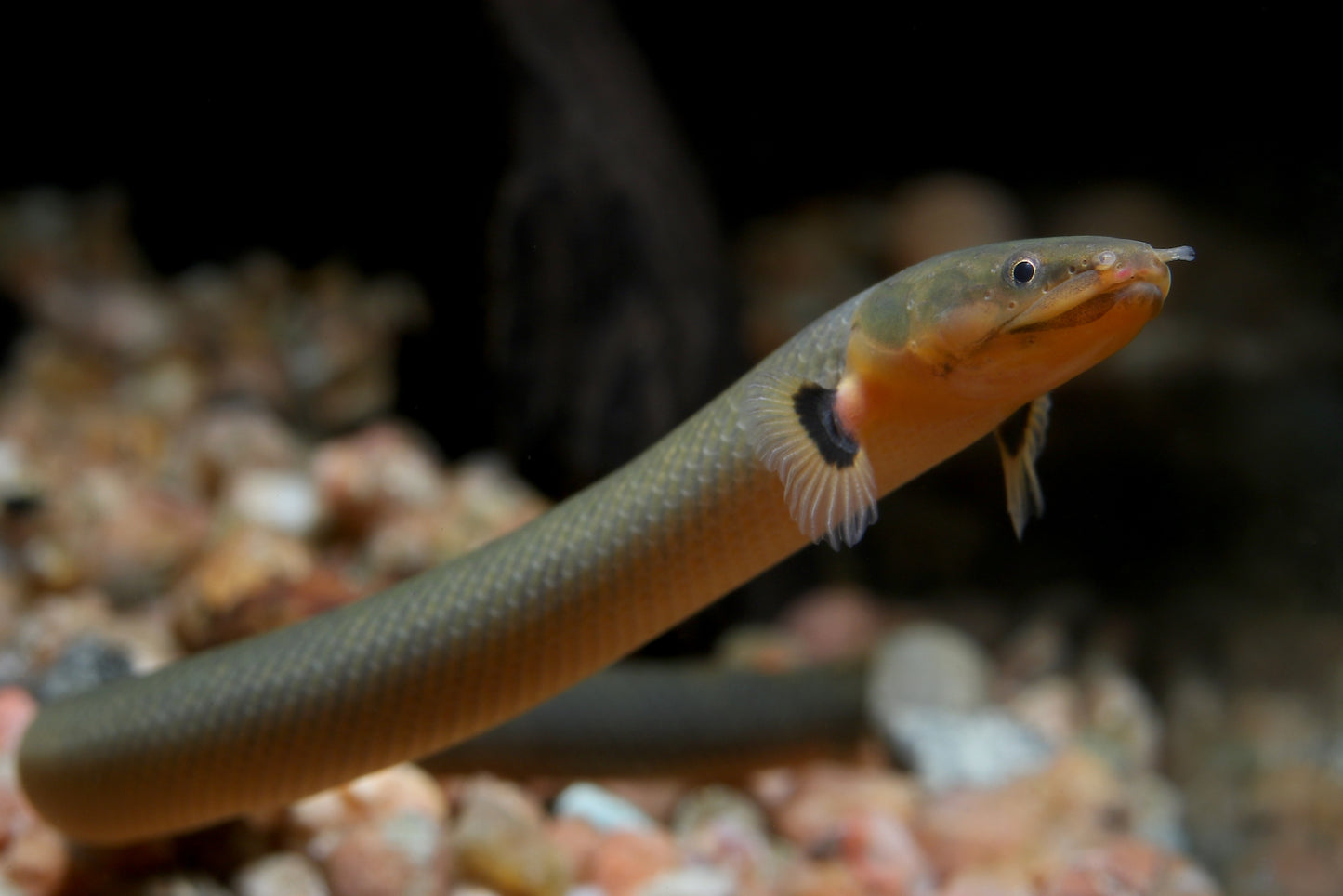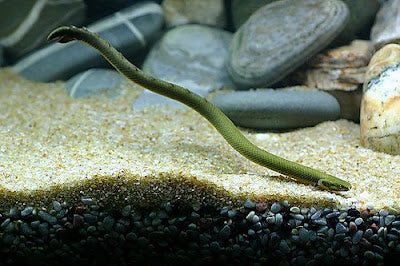Rope Eel, Fish Freshwater (Erpetoichthys calabaricus) - Live Fish
Rope Eel, Fish Freshwater (Erpetoichthys calabaricus) - Live Fish
Detailed Description
Detailed Description
Rope Eel (Erpetoichthys calabaricus)
Also known as the Ropefish, Reedfish or Snakefish — a prehistoric beauty with personality!
The Rope Eel is a unique, elongated freshwater oddball that looks like something out of a different era — and that’s because it is! With its snake-like body, smooth scales, and gentle demeanor, this species brings both curiosity and charm to large aquariums. Despite its name, it’s not a true eel, but a distant cousin of bichirs — making it a fascinating choice for those seeking something beyond the ordinary.
🔍 Quick Facts:
-
Common Names: Rope Eel, Reedfish, Snakefish
-
Scientific Name: Erpetoichthys calabaricus
-
Origin: Central & West Africa (Congo Basin, Nigeria, Cameroon)
-
Size: Up to 36 inches in the wild; 18–24 inches in captivity
-
Temperament: Peaceful, shy, nocturnal
-
Lifespan: 15–20 years with proper care
-
Care Level: Intermediate
🏡 Ideal Aquarium Setup:
-
Minimum Tank Size: 55 gallons (larger preferred for full-grown adults)
-
Temperature: 75–82°F (24–28°C)
-
pH Range: 6.0–7.5
-
Water Hardness: Soft to moderate
-
Tank Environment:
-
Secure lid is a must — rope eels are escape artists!
-
Soft substrate with plenty of hiding spots (tubes, driftwood, rocks)
-
Subdued lighting or floating plants appreciated
-
Tankmates should be peaceful and too large to be swallowed
-
🍽️ Diet:
Carnivorous
-
Prefers meaty, high-protein foods:
-
Live or frozen bloodworms, earthworms, blackworms
-
Shrimp, chopped fish, sinking carnivore pellets
-
-
May ignore dry food — train gradually with patience
🐣 Breeding Info:
-
Very rare in home aquariums
-
Breeding typically requires specific conditions and hormone treatments
-
Rope eels are egg layers, and fry require very soft water and live food
🌟 Fun Facts:
-
Rope Eels can breathe air via a modified swim bladder — they survive short periods out of water
-
Their body is flexible and armored, allowing them to slither between tight gaps
-
Active mostly at night, but become more social with regular feeding and a calm tank
-
Have poor vision but excellent smell — they "hunt" by scent!
💡 Pro Tip:
Keep tight-fitting lids with no gaps — they are known to squeeze out through filter openings or lids left ajar. Consider using foam inserts to seal gaps.
🦎 Add an ancient touch to your aquarium with the Rope Eel — an engaging, peaceful oddball species with character, history, and undeniable charm.
Product features
Product features
Materials and care
Materials and care
Merchandising tips
Merchandising tips
Share




